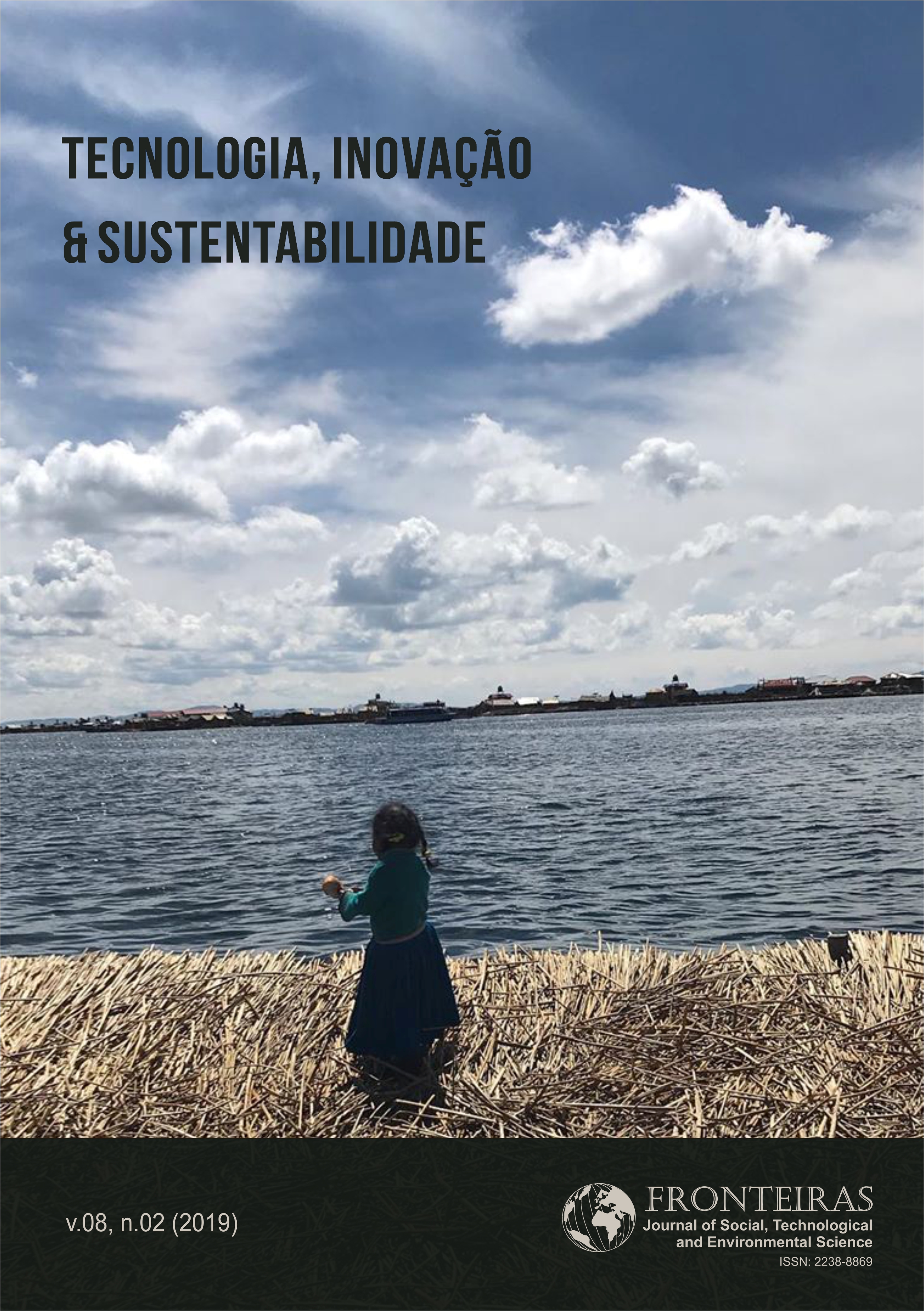Data of Electric (Un)Availability in Brazilian Amazon's Extractive Communities
DOI:
https://doi.org/10.21664/2238-8869.2019v8i2.p439-444Palavras-chave:
Energia, Ãreas Protegidas, Reservas Extrativistas, Amazônia BrasileiraResumo
O objetivo do estudo foi verificar a disponibilidade de eletricidade, e suas fontes energéticas, bem como a média de dispersão por área nas comunidades tradicionais das Reservas Extrativistas Amazônicas. O conjunto de dados apresentou descrição situacional da população da amostra permitindo futuras conclusões sobre o nível de justiça energética dessas áreas. O estudo disponibilizou informações sobre: geografia local, relevante para analises quanto à métodos adequados para suprimento energético dessas localidades; dimensão da extensão territorial da amostra e o número de famílias das áreas protegidas, permitindo o cálculo da média quantitativa do número de famílias por hectares; localização territorial das áreas investigadas, revelando a permeabilidade da divisão política municipal quanto as fronteiras geográficas das áreas protegidas. Os dados apresentados no estudo podem ser utilizados para estudos comparativos em situações análogas.
Referências
Andrade CS, Rosa LP, Silva NF 2011. Generation of electric energy in isolated rural communities in the Amazon Region a proposal for the autonomy and sustainability of the local populations. Renewable and Sustainable Energy Reviews, 15(1):493-503. Available from: https://doi.org/10.1016/j.rser.2010.09.052.
Blackman A, Veit P 2018. Titled Amazon Indigenous Communities Cut Forest Carbon Emissions. Ecological Economics, 153:56-67. Available from: https://doi.org/10.1016/j.ecolecon.2018.06.016.
Delina L 2017. Multilateral development banking in a fragmented climate system: shifting priorities in energy finance at the Asian Development Bank. Int Environ Agreements, 17(1):73-88. Available from: https://doi.org/10.1007/s10784-016-9344-7.
Flores JA, Konrad O, Flores CR, Schroder NT, Hasan C 2018. Data of electric (un)availability in Brazilian Amazon’s extractive communities. figshare. Fileset. Available from: https://figshare.com/s/a14fc2b32861559a27f9.
Gómez MF, Silveira S 2015. The last mile in the Brazilian Amazon: a potential pathway for universal electricity access. Energy Policy, 82:23-37. Available from: https://doi.org/10.1016/j.enpol.2015.02.018.
ICMBio (Instituto Chico Mendes de Conservação da Biodiversidade) 2018a. Painel Dinâmico, Brasília. [cited 2018 Jan 22]. Available from: http://qv.icmbio.gov.br/QvAJAXZfc/opendoc2.htm? document=painel_corporativo_6476.qvw&host=Local&anonymous=true.
ICMBio (Instituto Chico Mendes de Conservação da Biodiversidade) 2018b. Planos de Manejo, Brasília. [cited 2018 Jan 22]. Available from: http://www.icmbio.gov.br/portal/planosmanejo.
ISA (Instituto Socioambiental) 2018. Unidades de Conservação no Brasil. [cited 2018 Jan 27]. Available from: https://uc.socioambiental.org/.
Liu Y, Yu S, Zhu Y, Wang D, Liu J 2018. Modeling, planning, application and management of energy systems for isolated areas: a review. Renewable and Sustainable Energy Reviews, 82(1):460-470. Available from: https://doi.org/10.1016/j.rser.2017.09.063.
Matos FB, Camacho JR, Rodrigues P, Guimarães SC 2011. A research on the use of energy resources in the Amazon. Renewable and Sustainable Energy Reviews, 15(6):3196-3206. Available from: https://doi.org/10.1016/j.rser.2011.04.012.
MMA (Ministério do Meio Ambiente do Brasil) 2018. Cadastro Nacional de Unidades de Conservação, Brasília. [cited 2018 Jan 22]. Available from: http://www.mma.gov.br/areas-protegidas/cadastro-nacional-de-ucs/consulta-por-uc.
Planalto 2002. Decreto nº 4.340, Brasília. [cited 2018 Feb 14]. Available from: http://www.mma.gov.br/port/conama/legiabre.cfm?codlegi=374.
Reis LB, Santos EC 2014. Energia elétrica e sustentabilidade: aspectos tecnológicos, socioambientais e legais. 2.ed, Manole, Barueri.
Ruales-Salcedo ÁV, Prado-Rubio AO, González, AFR 2018. Harnessing lignocellulosic waste for energy storage and generation for off-grid rural areas. Clean Techn Environ Policy, 20(7):1515-1526. Available from: https://doi.org/10.1007/s10098-018-1503-9.
Sánchez AS, Torres EA, Kalid RA 2015. Renewable energy generation for the rural electrification of isolated communities in the Amazon Region. Renewable and Sustainable Energy Reviews, 49:278-290. Available from: https://doi.org/10.1016/j.rser.2015.04.075.
United Nations 2015. Transforming our world: the 2030 agenda for sustainable development. [cited 2018 Feb 12]. Available from: https://sustainabledevelopment.un.org/content/documents/ 21252030%20Agenda%20for%20Sustainable%20Development%20web.pdf.
Vera I, Langlois L 2007. Energy indicators for sustainable development. Energy, 32(6):875-882. Available from: https://doi.org/10.1016/j.energy.2006.08.006.
Yang F, Yang M 2018. Rural electrification in sub-Saharan Africa with innovative energy policy and new financing models. Mitig Adapt Strateg Glob Change, 23(6):933-952. Available from: https://doi.org/10.1007/s11027-017-9766-8.
Downloads
Publicado
Como Citar
Edição
Seção
Licença
Esta revista oferece acesso livre imediato ao seu conteúdo, seguindo o princípio de que disponibilizar gratuitamente o conhecimento científico ao público proporciona maior democratização mundial do conhecimento.
A partir da publicação realizada na revista os autores possuem copyright e direitos de publicação de seus artigos sem restrições.
A Revista Fronteiras: Journal of Social, Technological and Environmental Science segue os preceitos legais da licença Creative Commons - Atribuição-NãoComercial 4.0 Internacional.


